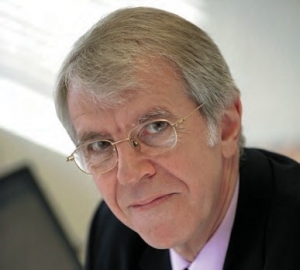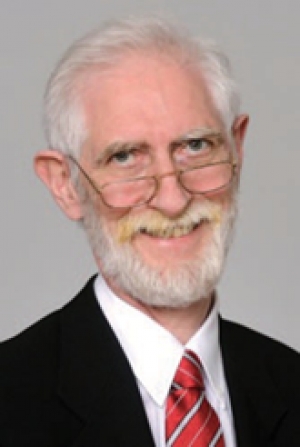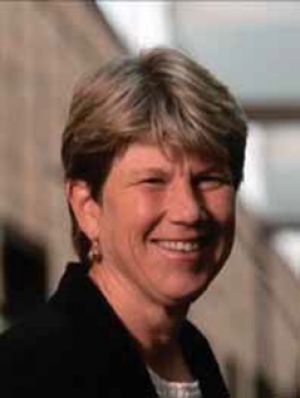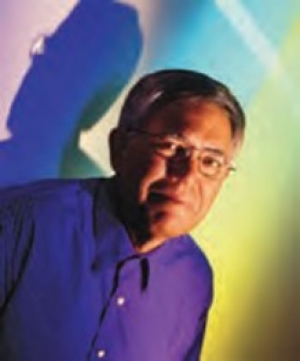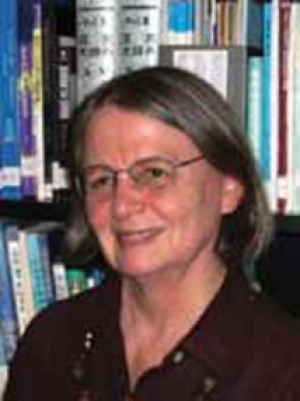RSAI Sections
Elisabete Martins
Sir Alan Wilson
My academic origins were far removed from regional science. I graduated in Mathematics and I wanted to work as a mathematician. I had a summer job as an undergraduate in the (then new) Rutherford Lab at Harwell in the UK and this led to a full-time post when I left Cambridge. I was, in civil service terms, a ‘Scientific Officer’ which I was very pleased about because I wanted to be a ‘scientist’. I even put that as my profession on my new passport. It was interesting. I had to write a very large computer programme for the analysis of bubble chamber events in experiments at CERN (which also gave me the opportunity to spend some time in Geneva). With later hindsight, it was a very good initial training in what was then front-line computer science. But within a couple of years, I began to tire of the highly competitive nature of elementary particle physics and I also wanted to work in a field where I could be more socially useful but still be a mathematician. So I started applying for jobs in the social sciences in universities: I still wanted to be a maths- based researcher. All the following steps in my career were serendipitous – pieces of good luck.
It didn’t start well. I must have applied for 30 or 40 jobs and had no response at all. To do something different, sometime in 1962, I joined the UK Labour Party. I lived in Summertown in North Oxford, a prosperous part of the city, and there were very few members. Within months, I had taken on the role of Ward Secretary. We selected our candidates for the May 1963 local elections but around February, they left Oxford and it then turned out that the rule book said that the Chairman and Secretary of the Ward would be the candidates, so in May, I found myself the Labour candidate for Summertown. I duly came bottom of the poll. But I enjoyed it and in the next year, I managed to get myself selected for East Ward – which had not had a Labour Councillor since 1945 but seemed just winnable in the tide that was then running. I was elected by a majority of 4 after four recounts. That led me into another kind of substantive experience – three years on Oxford City Council.
And then a second piece of luck. I was introduced by an old school friend to a small group of economists in the Institute of Economics and Statistics in Oxford who had a research grant from the then Ministry of Transport in cost- benefit analysis. In those days – it seems strange now – social science was largely non-quantitative and they had a very quantitative problem – needing a computer model of transport flows in cities. We did a deal: that I would do all their maths and computing and they would teach me economics.
So I changed fields by a kind of apprenticeship. It was a terrific time. I toured the United States – where all the urban modellers were – with Christopher Foster and Michael Beesley and we met people like Britton Harris (the Penn State Study) and I. S ‘Jack’ Lowry (of ‘Model of Metropolis’ fame). It was through the people I met on this trip that I had my first introduction to regional science. Back in Oxford, I set about trying to build the model. The huge piece of luck was that I recognised that what the American engineers were doing in developing gravity models could be restated in a format that was more Boltzmann and statistical mechanics than Newton and gravity and this generalised the methodology. The serendipity in this case was that I recognised some terms in the engineers’ equations from my statistical mechanics lectures as a student. This led to ‘entropy-maximising models’. I was suddenly invited to give lots of lectures and seminars and people forgot that I had this rather odd academic background.
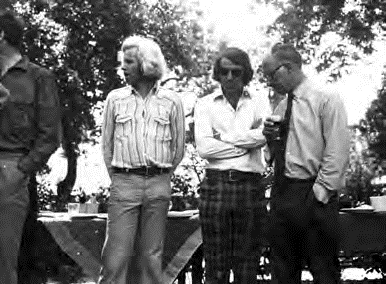
Alan Wilson (centre) with colleagues, early 1970s
It was a time of rapid job progression. I moved with Christopher Foster to the Ministry of Transport and set up something called the Mathematical Advisory Unit, which grew rapidly, with a model-building brief. (I had been given the title of Mathematical Adviser: it should have been ‘Economic Adviser’ but the civil service economists refused to accept me as such because I wasn’t a proper economist!). This was 1966–68 and then serendipity struck again. I gave a talk on transport models in the Civil Engineering Department in University College London and in the audience was Professor Henry Chilver. I left the seminar and started to walk down Gower Street, when he caught up with me and told me that he had just been appointed as Director of a new research centre – the Centre for Environmental Studies – and “would I like to be the Assistant Director?” My talk had, in effect, been a job interview – not the kind of thing that HR departments would allow now! And so I moved to CES and built a new team of modellers and worked on extending what I had learned about transport models to the bigger task of building a comprehensive urban model – something I have worked on ever since. In the late 60s, regional science began to develop seriously in the UK and Europe and I recall giving a paper at a conference in London – was it the first British Section meeting or was it a European meeting? What I do remember is my naivety on conference presentations. I had written a very long paper – far too long – titled ‘Towards a comprehensive urban model’. John Parry Lewis was chairing the session and to my horror, as I was around the end of my introduction to what I was planning to say, he told me I had about five minutes left! Somehow, I survived.
By the end of the 60s, quantitative social science was all the rage. Many jobs were created as universities sought to enter the field and I had three serious approaches: one in Geography at Leeds, one in Economics and one in Town Planning. I decided, wisely as it turned out, that Geography was a broad church and had a record in absorbing ‘outsiders’ and so I came to Leeds in October 1970 as Professor of Urban and Regional Geography. And so I became a geographer! There was a newspaper headline in one of the trade papers with words to the effect that “Leeds appoints Geography Professor with no qualifications in Geography!” However, again, the experience was terrific. I enjoyed teaching. It led to long term friendships and collaborations with a generation that is still in Leeds or at least academia: Martin Clarke, Graham Clarke, John Stillwell, Phil Rees, Adrian MacDonald, Christine Leigh, Martyn Senior, Huw Williams and many others – a long list. Some friendships have been maintained over the years with students I met through tutorial groups. We had large research grants and could build modelling teams. Geography, in the wider sense, did prove very welcoming and it was all – or at least mostly! – very congenial. Sometime in the early 1970s, I found myself as head of department and I also started taking an interest in some university issues.
But that decade was mainly about research and was very productive. In the mid-70s, I had three years as an Adjunct Professor in the Dept of Regional Science at Penn and I spent three weeks there each summer giving lectures. It was a period of close collaboration with Britton Harris that led to our 1978 paper on retail dynamics that has informed much of my work since. I attended many regional science conferences and odd remarks stick in my memory: Morton Schneider, for example, saying in a response to a presentation of mine, that I was the only person in the history of mathematics who used the letter ‘O’ as a variable!
By the end of the decade, there had been the oil crisis, cuts were in the air – déjà vu! – and research funding became harder to get. The next big step had its origins in a horse racing meeting on Boxing Day – was it 1983? – at a very cold Wetherby in Yorkshire UK. I was with Martin Clarke in one of the bars and we were watching – on the bar’s TV – Wayward Lad, trained near Leeds by Michael Dickinson, win the King George Stakes at Kempton.
Thoughts turned to our lack of research funding. It was at that moment, I think, that we thought we would investigate the possibility of commercial applications of our models. We first tried to ‘sell’ our ideas to various management consultants. We thought they could do the marketing for us. But no luck. So we had to go it alone. We constituted a two-person very part-time workforce. Our first job was finding the average length of garden paths in rural Oxfordshire for the Post Office! Our second was predicting the usage of a projected dry ski slope in Bradford, UK. We did the programming, we collected the data. We wrote the reports. We were once moved on by the management from outside Marks and Spencers store in Leeds when we were standing outside with clip boards trying to collect origin and destination data from customers! But then it suddenly was better. We had substantial contracts with W H Smith (a major UK high street chain) and Toyota (UK and Belgium) and we could start to employ people. It is a longer story that can’t be told here, but that is what grew into GMAP, with Martin Clarke as the Managing Director and driving its growth. At its peak, GMAP was employing 120 people (largely Leeds University geography students) and had a range of blue-chip clients. That was a kind of real applied geography and regional science that I was proud to be associated with.
Simultaneously in the 80s, I began to be involved in university management and I became ‘Chairman of the Board of Social and Economic Studies and Law’ – what in modern parlance would be a Dean. In 1989, I was invited to become Pro-Vice-Chancellor – at a time when there was only one. I left the Geography Department and, as it turned out, never to return. The then Vice-Chancellor became Chairman of the CVCP and had to spend a lot of time in London and so the PVC job was bigger than usual. In 1991, I found myself appointed as Vice-Chancellor and embarked on that role on 1 October in some trepidation. I was VC until 2004. It was challenging, exciting and demanding. It was, in Dickens’ phrase, ‘the best of times and the worst of times’: tremendously privileged, but also with a recurring list of very difficult, sometimes unpleasant, problems. But this is about geography and regional science: I somehow managed to keep my academic work going in snatches of time but the publication rate certainly fell.
I was Vice-Chancellor for almost 13 years and in 2004 I was scheduled to ‘retire’. This, however, seemed to be increasingly unattractive. Salvation came from an unlikely source: the Department for Education and Skills (DfES) in London. I was offered the job of Director-General for Higher Education and so I became a civil servant for almost three years with policy advising and management responsibilities for universities in England. Again, it was privileged and seriously interesting, working with Ministers, having a front row seat on the politics of the day. But I always knew I wanted to be an academic again, so after a brief sojourn in Cambridge, I returned to academic life at University College London as Professor of Urban and Regional Systems – and that was over four years ago. This has been another terrific experience. I work with Mike Batty, an old modelling friend and Andy Hudson-Smith in the Centre for Advanced Spatial Analysis and a group of young researchers and students. I run a course for graduate students based on a book of mine which was published in 2010 – Knowledge Power – url: www.routledge.com/9780415553117 – and a course on urban modelling, written up as The science of cities and regions published by Springer in January 2012 – search Springer.com for details. What has been very exciting is that my research field, developed into the realms of what is now called complexity science, has become a hot topic. So research grants flow again. This includes £2.5M for a five-year grant from EPSRC for a five-year project on global dynamics – now 18 months under way – see the CASA web site for recent working papers. This embraces migration, trade, security and development aid: big issues to which real geography and regional science can make a significant contribution. It funds half a dozen new research posts and five PhD studentships. The shopping list of research challenges is a long one and so ‘retirement’ seems, hopefully, a long way away!
(Published on RSAI Newsletter 2012 May)
Tschangho John Kim
Endowed Professor of Urban and Regional Systems at University of Illinois at Urbana-Champaign (UIUC)
I began my education in my native South Korea in Architectural Engineering, studied Urban Design at Meistershule für Architekture, Akademie der Bildenden Künste in Vienna, Austria, and completed graduate study in planning at Princeton University with a Ph.D. degree in 1976.
I was first introduced to Regional Science by a colleague of mine, a Ph.D. student at Princeton, who showed me Walter Isard’s ‘Green Book’. The book opened my eyes at the time when I was struggling with searching for suitable methods for solving urban and regional problems. Luckily I met Professor Edwin Mills who taught me economic principles, which I integrated with regional science methods. This was the beginning of my wonderful career as a planner, engineer and regional scientist, searching for strategies for solving spatial settlement issues.
I am very proud of the career I have chosen following in my father’s footstep as a university professor, having chosen urban planning and regional science as my main focus of discipline. I must have done something good since my son also has chosen to be an academic.
Equipped with socio-economic theories based on engineering education and regional science methodologies, I have had a wonderful career.
In addition to publishing 8 books, 140 journal articles, book chapters, and professional articles in the areas of transportation planning, urban and regional development, global urbanization, geographic information systems, intelligent transportation systems and location-based services, I was fortunate to gain experience in solving real-world problems. In 1979–80, I served as the project director of the National Comprehensive Transportation Study of Korea, sponsored by the World Bank. I also directed the Optimal Transport Sector Development Project in Indonesia in 1990–1991. I have been an advisor to the ArRiyadh Development Authority (ADA) in Saudi Arabia since 1994. I have been a Fulbright Scholar to Germany (1986) and Senior Fulbright Scholar to Korea (1994–1995).
Furthermore, I have served as International Conference Coordinator of the Regional Science Association (1988–1991); co-Editor of The Annals of Regional Science for the period of 1994–2005; a member of Council, Regional Science Association International (2008–2010); and served as President of the Western Regional Science Association (2008–09).
My research contributions are intended to advance both planning scholarship and practice surrounding issues of growth and change. As a regional scientist, I have searched for theories and methods that provide a framework for developing and evaluating realistic strategies for mitigating problems caused by human settlements, environmental degradation and economic growth in urban areas. As a planner, I have been a strong advocate for the practical side of the planning profession. I have consistently embraced opportunities to put my expertise in the field of urban planning into practice. My current research focus can be grouped in the following three topics:
Technologies and Cities
New technologies alter the physical possibilities of human settlement, as well as the economic, cultural, and political relations of everyday urban life. A great deal of my current research has focused on how new information technologies (IT)–the Internet, personal computers, personal digital assistants, and wireless communications–are transforming the world as we know it and how that transformation really takes shape in human settlements, particularly in urban areas.
Transportation, Land Use and Infrastructure Protection
Early in my career as an urban planner and a regional scientist, I became convinced that the analysis of transportation issues cannot be separated from other urban and regional activities. The majority of my research on transportation has to do with searching for fundamental causes and solutions for transportation problems stemming from land use, socio-economic factors, and the modern lifestyles of urban residents.
International Planning
According to the United Nations, the world will need to build new cities and/or expand existing cities to accommodate about 1.6 billion additional urban residents by 2030. This trend is the result of many complex socio-economic and political factors, and poses unprecedented challenges to the functioning of cities and the quality of life for urban dwellers. The resources needed for accommodating new urban dwellers will be enormous. Can we plan sustainable future cities? With this question in mind, I have collaborated with scholars from various parts of the world in implementing research projects investigating population and urban growth and change in Saudi Arabia, Indonesia, China, Korea, Sweden, Kenya, Poland and the USA.
The basic question I address in my research has been “What would be the major economic, social, and environmental implications, particularly in an urban context, in the event of specific changes in technology and lifestyle?” I am continually searching for improved frameworks to apply to the formulation of scenarios regarding sustainable urban and regional development. At the same time, it is my view that the potential to increase the utility of living in urban areas while simultaneously facilitating environmental sustainability depends not only on planning, economic instruments, and new technologies, but also upon education and the cooperation of citizens through changes in their lifestyles.
(Published on RSAI Newsletter 2011 November)
Manfred Fisher
Manfred Fisher, University of Vienna, Austria
Manfred M. Fischer is Professor Ordinarius of Economic Geography at the Wirtschaftsuniversität Wien (Vienna University of Economics and Business), and Adjunct Professor at the University of Vienna. He holds a Dr.rer. nat. degree (1975, summa cum laude) in geography and mathematics from the Friedrich-Alexander University Erlangen- Nuremberg and a Dr.habil. degree (1982) in human geography from the University of Vienna. He is one of the founding editors of the Springer book series on Advances in Spatial Science, and co-founder and editor-in-chief of the Journal of Geographical Systems, a journal that bridges the work between regional science, quantitative geography and GIScience.
For about 35 years Manfred has been involved in the development and application of (mathematical and statistical) models, methods and techniques in regional science and related fields, a time period during which he has published 32 books, 110 papers in refereed journals and 115 book chapters and encyclopedia articles. In recognition of his academic achievements, he has been named a fellow of the World Academy of Arts and Sciences, the International Eurasian Academy of Sciences, the Austrian Academy of Sciences and the Koninklijke Nederlandse Akademie van Wetenschappen.
In relation to the theme of this newsletter, Manfred sees a great challenge for regional scientists to analyse, for example, some of the regional consequences of climate change. In doing so, one has to be aware that the coupled atmosphere- ocean general circulation models – the most powerful tools today for global climate simulation – still run at relatively coarse horizontal spatial resolutions (ca. 300 km). To get regional information from such models one has to rely on some regionalization technique. Such a technique essentially rests on two assumptions, namely, the ability of general atmosphere-ocean circulation models, first, to provide accurate climate features over the region of interest, and, second, to produce reliable “predictions” of the response of broad scale climatic features to changes in external events.
Given these assumptions, the analysis of regional consequences of climate change is characterized by high degrees of uncertainty. Standard approaches to modelling the economics of regional climate change – even those that purport to treat risk by Monte Carlo simulations – very likely fail to account adequately for the implications of large impacts with small probability. Indeed, climate change appears to be a problem characterized by Knight-uncertainty. That is to say, modelling regional impacts of climate change is a monumental exercise in which various subjective probabilities have to be assigned in the course of the analysis. A Bayesian framework appears to be most appropriate to move forward quickly and surely, and creatively enough to realize the potential now before us.
(Published on RSAI Newsletter 2011 June)
Ann Markusen
Ann Roell Markusen is Professor and Director of the Project on Regional and Industrial Economics at the University of Minnesota’s Humphrey Institute. This year, she is serving as the UK Fulbright Distinguished Chair at the Mackintosh School of Architecture, Glasgow School of Art.
“My work explores the intersection between industries and occupations, on the one hand, and regions on the other. Using my industrial organization, economic development, and public finance complements to a regional economics training, I have delved deeply into these intersections using my own backyards (Michigan, Colorado, Washington DC, California, Chicago, New Jersey, and Minnesota) as laboratories. Often that grounding has helped me craft new theoretical perspectives–an industrial districts typology (the basis of my Alonso Prize), conceptualizing human capital and operationalizing it via occupations, and the case for a consumption base theory of regional development.
Bit by the policy bug thirty five years ago (Mike Teitz’s phrase), I have sought a real-world policy counterpart for my research, taking leaves from my Colorado, Berkeley and other jobs to serve full time at every level of government and frequently writing op eds and policy advocacy pieces in the New York Times, LA Times and sim.
Real world policy exposure, forcing me to deal with things often assumed away, has greatly strengthened my work. I particularly loved the years I worked on the military industrial complex, crafting the intellectual case for the substantial 1990s peace dividend worldwide.
Recently I have been documenting the formation, regional distribution, migration, and economic impacts of artists, a highly mobile, innovative and high self-employment occupation.
Athletes form an interesting contrast– while both groups are targets of urban development policy, artists are more highly educated and are more apt to be rooted and re-spending in their current regions. There are stronger arguments and evidence for the catalytic role of artists than athletes, though arguably, the sports world has done a better job of creating opportunities for local participation and recruitment of future professionals.
I appreciate the colleagues I have worked and RSAI’s opportunities for presenting research and receiving feedback. Mike Teitz, Andy Isserman, Karen Polenske, and Peter Hall have been wonderful sounding-boards and collaborators in research, as have my former students Amy Glasmeier and many others. Roger Bolton, Bill Alonso, and Walter Isard have been great role models. I look forward to seeing many more women and minorities in our ranks and leadership.”
(Published on RSAI Newsletter 2010 November)
David Boyce
David Boyce is Adjunct Professor of Civil and Environmental Engineering at Northwestern University in Evanston, Illinois, near Chicago, and Professor Emeritus of Transportation and Regional Science at the University of Illinois at Chicago, where he served until 2003.
During the past 40 years, my research interests have narrowed and become more focused. I began my academic career with an interest in methods related to metropolitan land use and transportation planning generally, and long-range forecasting in particular. I also had an interest in the impact of transportation infrastructure on urban travel and location behavior, drawing on my early training in statistical methods. During the same early period, I learned about convex optimization methods and their extensions for deriving and solving certain travel and location models. Since 1980, I mainly focused on formulation and implementation of integrated travel forecasting models that is models that represent in a consistent manner the various choices that urban travelers make: route, mode, destinations for work, shopping and recreation, and even location of their residences. Most recently, I have been working with a model of route choice for congested networks based on the user or selfish equilibrium principle. Presently, my principal activity is writing a book on the history of the field of urban travel forecasting.
From 1968 until 1989, I served in various leadership positions of RSAI, primarily related to organization of international conferences. In late 1997, I became the RSAI Archivist, succeeding Barclay Jones who established the RSAI Archives at Cornell University during the 1970s, and continued as Archivist until his death in 1997. The purpose of the RSAI Archives is to collect, organize and preserve materials pertaining to the founding, development and influence of the Regional Science Association International (correspondence, newsletters, conference programs and abstracts, financial reports, directories, etc.). From time to time, I also advise individual regional scientists about placing their research papers in appropriate archives, such as their university archives or local or regional historical societies. Finally, I contact and encourage regional scientists who have been active in RSAI to arrange for the preservation of documents related to our association’s activities. And occasionally, I succeed in doing so! If you are interested in such arrangements for your own papers, please do contact me at d- This email address is being protected from spambots. You need JavaScript enabled to view it..
(Published on RSAI Newsletter 2010 June)
Karen Polenske
Karen Polenske is Professor of Regional Political Economy and Planning at the Department of Urban Studies and Planning from the Massachusetts Institute of Technology.
Some of us have wondered why more U.S. and European women are not attracted to the sciences and engineering as well as economics, regional science, and other disciplines that require mathematics. Encouragement to do mathematics (and statistics) is needed early from parents and teachers while girls are still in grade school and high school. Often young girls are discouraged from taking it beyond the required subjects, although the use of the computer may be changing this. I never gave much thought as to taking or not taking mathematics when I was in high school. I enjoyed maths and also enjoyed teaching other students about how to do the problem sets.
In high school, when I took geometry, I was the only girl out of about 200 in my class who was still attending the mathematics class. I was planning to be an extension agent, and my teachers could not understand why I wanted to learn maths. In graduate school, I was part of the first class in the economics department at Harvard University where we had the option of taking either a language or a mathematics examination. Until then, graduates were only required to pass the language examination. I took the maths option.
Look at the early issues (before 1960) of The American Economic Review, and you will find that articles were mostly devoid of equations, and authors used tables only to review historical or current data descriptively. Times have changed. Mathematics is now a regular part of most economic and regional science articles. Also many women attend the regional science meetings. Most do not realize how few women attended the early meetings. I remember one meeting in Chicago many years ago where Anna Nagurney and I were the only women in a group of over 100 men. Now, many women attend the annual meetings, and we have a get-together each year at the meetings, so that we become much better acquainted with one another (see Maureen Kilkenny’s article below).
I definitely think that having more women attend the meetings, becoming Fellows of the Regional Science Association International, and playing an active role in the Regional Science Association is a move in the right direction. I am not as sanguine about the current emphasis on mathematics and econometrics, partly because I see too many articles where the authors do not understand the underlying economic concerns – their focus on the econometrics often obscures the importance of the underlying issues.
(Published on RSAI Newsletter 2009 October)
Peter Nijkamp
Peter Nijkamp is professor in regional and urban economics and in economic geography at the VU University, Amsterdam. His main research interests cover plan evaluation, multicriteria analysis, regional and urban planning, transport systems analysis, mathematical modelling, technological innovation, and resource management. In the past years he has focused his research in particular on quantitative methods for policy analysis, as well as on behavioural analysis of economic agents. He has been visiting professor in many universities all over the world and he is past president of the European Regional Science Association and of the Regional Science Association International. In 2004 he received the Founder’s Medal. Peter comments:
‘Since its genesis in the 1950s, regional science has addressed over the successive decades social science issues related to regional and urban development. The methodologies deployed in regional science analyses have shown a wide variety of approaches ranging from policy evaluation to spatial econometrics, from spatial impact assessment to computable regional equilibrium model- ling, and so forth. The orientation in regional science was explicitly interdisciplinary in nature.
Interdisciplinary research has become rather fashionable in recent years, as it is generally believed that new scientific discoveries are most likely to be found as the interface or edge of different disciplines. From this perspective, regional science has a pioneering role to play in the future of the social sciences. It should also be added that regional science seeks its thematic orientation in the study of regions as concrete spatial entities which might be investigated from different perspectives. Thus, regional science offers a prism through which regions can be analyzed; it is not an omniscience in itself.
The Regional Science Association International (a few years ago) decided to create a system of ‘Fellows’ to honour scholars who have significantly contributed to papers in regional science research. In my view, an RSAI fellow is not in the first place an honoured scientist, but a scholar whose task it is to render services to the broader regional science community, in particular the younger generation.
From my early encounters with regional science - in the early 1970s – I have been fascinated by the wealth of approaches and news that are generated to better understand the ‘secrets’ of regions. Regional scientists form a scientific community of scholars who are fascinated by the undiscovered nature of modern regions and who are part of a discovery tour that will never come to an end. Regional science research is a discovery race without a finish’.
(Published on RSAI Newsletter 2009 March)
Building bridges
Building bridges in regional science
2025 and 2026 conference participation support
The RSAI facilitates the participation of researchers from low-income and lower-middle-income economies (as defined by the World Bank: https://data.worldbank.org/about/country-and-lending-groups#Low_income) at the RSAI World Congress 2026, and the three largest Regional Science Conferences in 2025 and 2026: PRSCO, ERSA and NARSC.
RSAI will provide a subsidy up to 500 Euros to selected researchers. This is likely to cover the conference registration fee and some local travel costs. Alternative means of financing will have to be sought for international travel and accommodation.
Only one author of a submitted paper presentation proposal can apply for a subsidy.
Interested researchers should upload a two-page CV plus a one-page motivation –including a budget with proposed sources of funding of the conference-related registration, travel and accommodation costs – within 30 days of receiving confirmation of the acceptance of the researcher’s abstract by the conference organizers.
Applicants should be regular members of the RSAI and have a paper accepted for presentation at the conference for which they are asking for support. In case you are willing to become a RSAI member, please get in touch with RSAI Secretariat (This email address is being protected from spambots. You need JavaScript enabled to view it.).
All applications, to be submitted at the following link:
https://forms.gle/G57Q983dAUK7aV9Z8
will be reviewed by the Committee and will have to be formally approved by the RSAI Council. Their decision will be final.
Before applying, please check if your country is eligible.
NARSC
 The North American Regional Science Council (NARSC) promotes the scholarly exchange of ideas and knowledge that apply to urban and regional phenomena in North America and across the globe.
The North American Regional Science Council (NARSC) promotes the scholarly exchange of ideas and knowledge that apply to urban and regional phenomena in North America and across the globe.
The association fosters exchange across academic disciplines and builds on the understanding that urban and regional issues are best addressed by utilizing tools, methods, and theoretical frameworks specifically designed for regional analysis, as well as concepts, procedures, and analytical techniques of the various social and other sciences.
The association organizes an annual national conference that provides a forum for interaction and discussion, and sponsors scholarly regional science journals for the dissemination of research and ideas. NARSC is an objective, scientific body without political, social, financial, or nationalistic bias.
PRSCO
 The Pacific Regional Science Conference Organisation (PRSCO) was established at the 7th Annual Meeting of the Western Regional Science Association (WRSA) in San Diego, February 1-4, 1968 at the initiative of representatives from WRSA and the Japan Section of the Regional Science Association (JSRSA). The first conference of PRSCO was held at the East-West Center, University of Hawaii, August 26-29, 1969. Subsequently, full conferences and smaller meetings have been held in many countries in the Pacific Rim area. A full international conference is held every second year and a smaller summer institute in alternate years.
The Pacific Regional Science Conference Organisation (PRSCO) was established at the 7th Annual Meeting of the Western Regional Science Association (WRSA) in San Diego, February 1-4, 1968 at the initiative of representatives from WRSA and the Japan Section of the Regional Science Association (JSRSA). The first conference of PRSCO was held at the East-West Center, University of Hawaii, August 26-29, 1969. Subsequently, full conferences and smaller meetings have been held in many countries in the Pacific Rim area. A full international conference is held every second year and a smaller summer institute in alternate years.
The PRSCO is one of the 4 supra-regional associations of RSAI (Regional Science Association International) which is founded in 1954. The PRSCO enhances and facilitates exchange of research information in the field of regional science among members of Membership Sections of the PRSCO, as well as the exchange of this information in the Pacific Rim area between such members and other persons with an interest in regional science.
The PRSCO is a federation of the following affiliated sections/associations of the Regional Science Association International in the Pacific Rim Area.
About Us
The Regional Science Association International (RSAI), founded in 1954, is an international community of scholars interested in the regional impacts of national or global processes of economic and social change.

